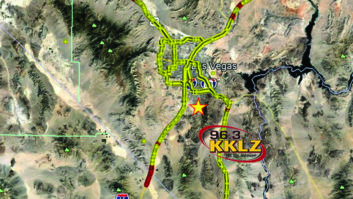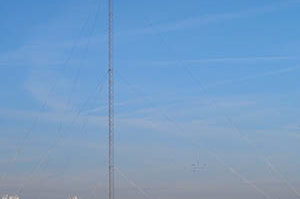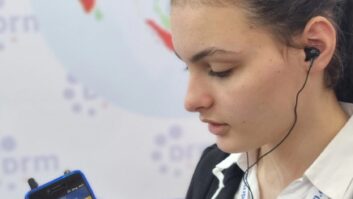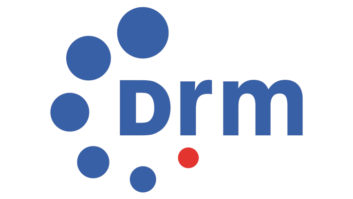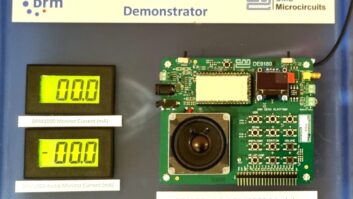Since its formal standardization as Mode E of the Digital Radio Mondiale specification in 2009, the DRM+ digital radio system has been the subject of keen interest in countries evaluating their options for digital radio services. In places where DAB or DAB+ are being implemented, DRM+ is of interest to local, community and other broadcasters who operate on a smaller scale than would normally be covered with a DAB multiplex.

An RF Mondial measurement receiver similar to this was used to gather data for the field tests.
Of particular interest to regulators is the compatibility of the DRM systems across a range of frequencies, its low operating power requirements and its spectrum efficiency, allowing it to work in regions that use 100 kHz FM allocations.
DRM+ is designed to operate in the VHF bands, having been tested in Bands I and III as well as Band II, the traditional home of FM radio. Its counterpart, DRM30, is designed for broadcasting at frequencies below 30 MHz, including medium-wave (the traditional AM band) and shortwave.
Dr. Jens Schroeder, founder of equipment manufacturer RFmondial, reviewed recent activities around the world to evaluate the DRM+ system and presented those results at the NAB Show this spring.
Lab tests
Recent lab simulations by engineers of the Institute of Communications Technology at Leibniz University in Hannover, Germany, are giving system planners a clearer idea of the effects of frequency and receiver speed on DRM+ system performance.
In particular, understanding the causes of audio dropouts due to various forms of signal fading is a key area of interest, as this is a primary concern for reliable reception in moving vehicles.
“In mulitpath environments, you get frequency-dependent Doppler shifts, and they will lead to intercarrier interference,” Schroeder explains. The lab team simulated this “fast fading” effect on a 100 MHz transmission system at receiver speeds ranging from 62 to 186 mph to determine the signal-to-noise ratio required to ensure reliable reception of the DRM+ signal.

A Nautel NV5 DRM+ transmitter was used in the Hannover field trials.
The study found that the system needs about 20 dB at 62 mph and increases to 22.5 dB at 186 mph, and that the difference between 100 percent availability and the 99 percent availability planning factor often used to predict real-world system performance is negligible at these speeds.
Another study attempted to characterize the effects of “slow fading.” At lower receiver speeds, long-wavelength multipath fading can be a problem, since fades longer than the 600 ms interleaver in the DRM+ system will cause dropouts. Simulations of a slow-moving (6.2 mph) receiver attempting to receive a DRM+ signal on indicate that at 100 MHz, 25 dB SNR is required for reception, while on 200 MHz, the system will operate at 22 dB SNR. As frequency increases, this trend continues due to the decreasing wavelength.
Field trials
The DRM+ system has been receiving close attention in several field trials over the past two years, Schroeder noted. In addition to the multi-system evaluations performed by ETRI in Korea [see page 1], DRM+ has been evaluated in Germany, Sri Lanka and the United Kingdom. All of these trials involved drive testing with equipment provided by the DRM Consortium, including RFmondial modulators and mobile test measurement systems.
In Hannover in early 2010, a small test DRM+ station was constructed atop a university building (approximately 230 feet above ground) with a directional yagi antenna operating at 30 W ERP on 95.2 MHz. Tests were conducted of a variety of system configurations, Schroeder said, but the results of one of the least robust operating modes (16-QAM, 0.5 code rate, 149 kbps) were quite encouraging.
Even with such a low power and reducing error correction to maximize the data rate, solid coverage was received out to a distance of about nine miles with good stereo audio quality down to a field strength of 46 dBµV/m at 18 dB SNR.
In Sri Lanka, a whirlwind measurement campaign of a test station in Colombo was conducted as part of a DRM+ workshop jointly organized by the Telecommunications Regulatory Commission of Sri Lanka, the Sri Lanka Broadcasting Corp.and the Asian Broadcasting Union from Nov. 29 to Dec. 2, 2010. The nature of the test was similar to the Hannover trials, with a relatively small 47-watt station operating on 87.6 MHz from a Sri Lanka Broadcasting tower southeast of downtown Colombo.
In this case, 4-QAM modulation was used with a code rate of 0.25, delivering 37.3 kbps. As predicted in Longley-Rice coverage projections, coverage extended roughly 5.5 miles north of the transmit site through the urban center of the city, with good quality stereo available down to 35 dBµV/m. This exceeds the performance of analog FM, Schroeder said, since the ITU recommends a field strength of 66 dBµV/m for quality stereo in urban environments.
Surround broadcasts were also demonstrated at the Sri Lanka workshop, with the system operating in 16-QAM at 149 kbps, and delivering a surround audio program along with a stereo program, a text news ticker and Journaline “teletext”-style messages.
Real world
From January to May of this year, the BBC in the U.K. conducted the most “real-world” test of DRM+ to date, according to Schroeder.
Using an available frequency vacated by a former commercial FM station on a combined antenna at the Craigkelly tower just north of Edinburgh, Scotland, the BBC operated a test station broadcasting with 1 kW ERP at 107 MHz. The system was configured to allow easy switching between two operating modes: 16-QAM with code rate 0.5 delivering 149 kbps, and a more robust 4-QAM with code rate 0.33 delivering 49.7 kbps.
Prior to the field tests, the BBC prepared comprehensive coverage predictions by using the U.K. Planning Model, a statistical terrain-sensitive coverage prediction model originally developed for digital television allocations and coverage analysis and extensively validated over the past decade.
Two field measurement periods in February and March yielded copious performance data about DRM+ operating in both the 4- and 16-QAM modes. The BBC chose measurement routes to characterize the extent of coverage around Edinburgh and the surrounding communities, and to determine performance of the system in dense downtown areas known to be challenging to radio reception. According to the test report published by the ITU, more than 1,500 miles of mobile test data were collected over the course of the tests.

This image shows coverage of the Hannover DRM+ system operating with multiple transmitters in a single-frequency network.
Dr. Schroeder characterizes the Scottish trials as a successful, highly credible real environment for evaluating DRM+ performance on a broad scale and said preliminary analysis indicates that “the system appears to perform as expected.” In particular, he said the operation of a 1 kW DRM+ in 4-QAM mode delivers coverage roughly the same as a 5 kW analog FM station.
Schroeder believes these tests, and others scheduled for this summer in New Delhi and at other venues in Europe and Asia over the coming year, will further cement DRM+ as a viable digital radio platform where broad compatibility over multiple frequencies, spectrum efficiency for challenging allocation environments and the ability to deliver advanced digital services alongside audio programming are desired.





